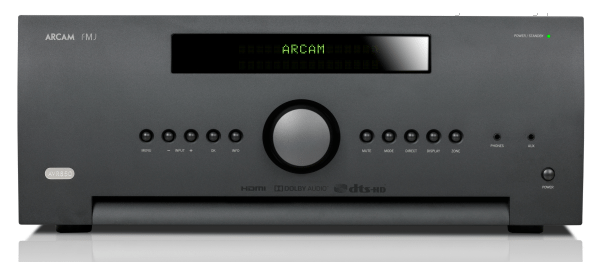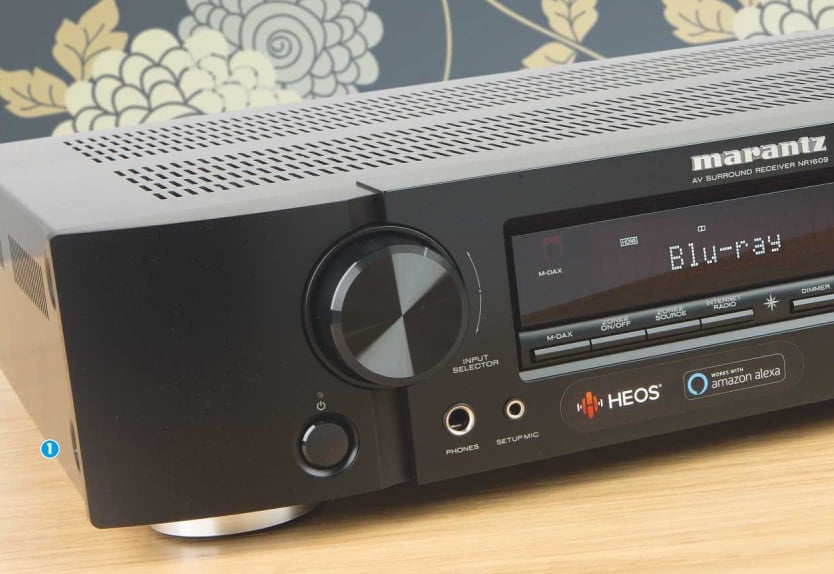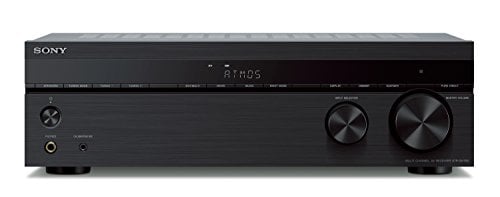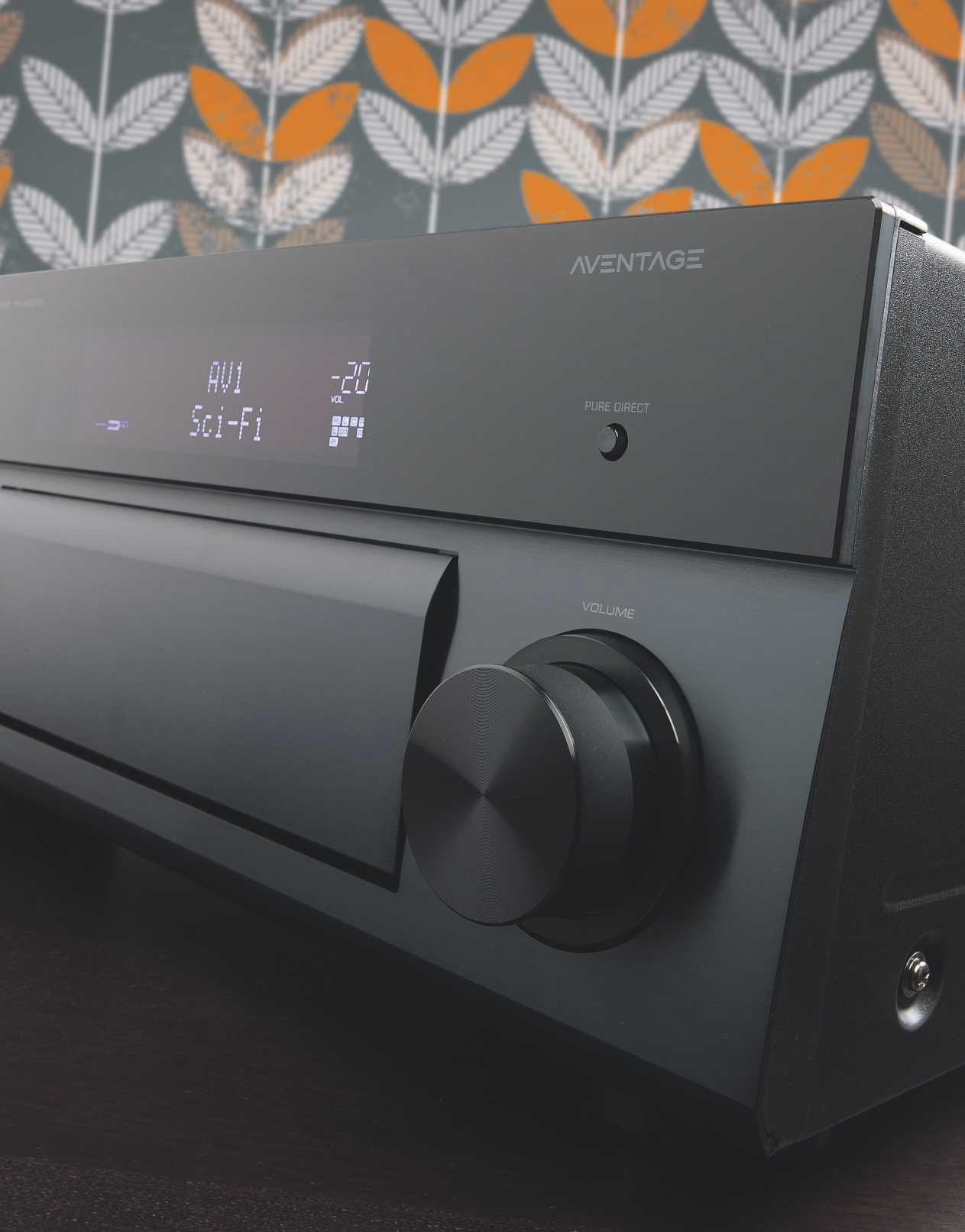Arcam AVR850 Review: Seizing the crown


Jon Thompson believes Arcam plus Dirac Live EQ is a match made in Dolby Atmos heaven
The home cinema industry has been in something of a rut since the financial meltdown of 2007, with gaping holes where much of the high-end market used to be. But Arcam’s latest integrated AV receiver has me thinking we may be seeing the light at the end of the tunnel.
This relatively small English company, famous for its hi-fi equipment, threw itself back into AV in a big way with the AVP950 (processor) and AVR750 (receiver) a couple of years ago – both very solid-sounding devices, top-notch in their price bands. It then launched the well-respected UDP411 Blu-ray player, and follows it with the AVR850 on test here. And this is no mere upgrade on the AVR750 – it’s a different beast altogether. And Dolby Atmos is partly responsible.
Times have changed in the world of professional cinema audio. Atmos has introduced all those channels and speakers. The spec supports 128 independent soundfields you can steer a movie’s sonics across. Timbre-matching becomes a real issue. Handy, then, that back in 2003 Dolby purchased Australia-based Lake Technology Limited, which had produced an audio correction system that could apply a realtime EQ to give a uniform timbre. Dolby was thinking way ahead; in 2012 it was able to launch the CP850 processor, the first pro cinema product to use ‘Dolby Lake’ processing for EQ. Old-school parametric EQ was no longer up to the job of matching all the soundfields.
But when Atmos was launched domestically, Dolby Lake processing stayed behind closed doors. So what’s the alternative? Dirac – a high-end EQ system from a company founded 15 years ago by professors and Ph. D. students at Uppsala University. Essentially, Dirac’s multichannel EQ is very similar to Dolby Lake. It appeared on Datasat’s premium RS20i processor a couple of years ago, and now finds its way into Arcam’s flagship AV receiver. The promise is multichannel sound of unrivalled accuracy.
In a Class G of its own
Arcam’s AVR850 is not cheap. At £4,200, it’s the most expensive integrated amp on the market that I can think of, more expensive than flagship processors from the likes of Marantz and Onkyo. It uses Arcam’s traditional audiophile Class G power amps, here rated at 100W-per-channel.

Arcam’s AVR remote control is surprisingly uncluttered
Excavate the AVR850 from its box and you’ll discover it’s fairly heavy (16kg) and offers the typical Arcam design. There’s a big volume knob in the middle of its fascia with basic function buttons arranged either side. The finish is a nice matt black and the build seems solid. It’ll look particularly good racked with other Arcam hardware.
There’s an array of rear-mounted inputs, but perhaps not the forest you might expect. Connections include seven HDMI inputs, at the 2.0a spec and with HDCP 2.2 support. There are no analogue video inputs at all, but I doubt that’s an issue for anyone. There are three HDMI outputs – two for a dual-screen system and one for a second video zone.
For external non-video sources you’ll find six sets of analogue stereo inputs. There are also four coaxial digital audio ports, plus a couple of optical ins.
Adjacent to the row of chunky speaker terminals sits a 7.1 compliment of phono preamp outputs should you want to use the AVR850 as a processor only. Above these are four extra phono outputs labelled for height channels, which is an indication of one of the AVR850’s limitations – this is only a sevenchannel amp. Extra power amps are required if you want to run any Atmos array beyond 5.1.2. This is not an out-the-box full-fat Atmos solution – in the style of Onkyo’s TX-NR5010 – despite the asking price.
IR, RS232 and 12V ports cater for advanced system setup. There is an Ethernet port, but no Wi-Fi. Personally, I think that is a good thing as you don’t want a high-powered radio transmitter in a high-quality audio device. A DAB/FM antenna socket, USB port and a 6V accessory output complete the rear-panel deal. Only headphone and 3.5mm inputs reside on the front fascia.
This AVR is like most of its high-end brethren – it’s all about audio and on the video side offers switching but nothing more. Yet there’s nothing wrong with this as the video processing options on mass-market receivers can often make pictures look worse than they should.
Nostalgic user interface
Switch on the AVR850 and you’ll immediately discover an area where Arcam could make some improvement. It’s purely cosmetic and has no effect on sound or image quality, but the main menu looks like a bit like a 1990s BBC engineering page. It’s easy to read and functional – initial setup is straightforward and easy to do – but in no way slick or sexy.
I began by listening to the AVR850 in stereo. My mantra is that if a processor can’t do a good job in stereo mode it won’t have a hope in hell in multichannel. CDs played via the coaxial and then analogue inputs impressed – the Arcam showed pace and rhythm; timing seemed spot on and the created soundstage was wide and deep. My one complaint, music-wise, is that the headphone jack is 3.5mm.
Away from physical media, the AVR850 doubles as a network audio player. Arcam’s iOS MusicLife UPnP/control app is good and responsive, and will connect to audio servers to dig out your collection of hi-res and MP3 audio files. There’s no DSD support, however. Oddly, considering the brand’s history regarding its iPod speakers, there’s no Apple AirPlay either.
As for home cinema multichannel, the unit supports DTS, Dolby TrueHD and Dolby Atmos off the shelf. DTS:X will be added via a firmware upgrade; Auro-3D, which has had some minor traction in the form of the Blu-ray disc Pixels from Sony Pictures, is absent. Of the three next-gen formats Auro-3D seems to be the least likely to have any impact, and DTS:X – as of writing this – seems to be struggling. Lionsgate, which had supported the latter theatrically with the likes of
Sicario, has now released that title in Dolby Atmos on BD.
AV bake off
The AVR850 is sonically a tour de force, and the icing on the cake is Dirac. In the consumer space, this is certainly the EQ system that well-heeled buyers should be clamouring for.
Dirac analyses your room, listens to each speaker in your setup, looks at its characteristics and presents them in a graph. The longer you spend measuring your room – the more points you analyse – the better correction you’ll get. Eight to 12 points seems to give you a nice result in an average-sized theatre. You can just do one if you want, but Dirac’s understanding of the issues in the room will be limited.
Once you have all your analysis data, this is sent via the net to Dirac’s mainframe computer along with the output curve that you would like as a target. It then throws more Petaflops than you need to know at it and sends a correction curve that the AVR850 can apply to all the speakers to produce an almost perfect response. Phase and time alignment are all part of the package.
And it can tune your subwoofer too. A room can have more of an effect on a sub than we often realise. Dirac’s analyse of mine revealed it was offering a very narrow band of energy, overpeaking at around 70Hz, producing a lot of bang but not much crash. Using Dirac I tuned it to produce a near-fl at response from 20Hz-100Hz. The difference became staggering; the whole system not only sounded much more integrated but with greater body and LFE detail.
I went one stage further and used three different speakers from three manufacturers across the LCR stage, all with their own unique timbre. I let Dirac see if it could match them, and it did, taking a trio of speakers and making them sound the same. Not in a bad way, either: they sounded how you would want them to.
Calibration complete and with the Arcam front-lining a 7.2.4 Atmos array, it proved to be the closest I have heard a home cinema come to sounding like a pro theatre.
My still-favourite demo disc – John Wick on Blu-ray – was a delight. The Red Circle club sequence is painfully good as you can hear all the delicate details of the violence (slicing blades, tinkling shell-casings) and the powerful impacts of the numerous handguns. Effects-steering was first rate. The musical soundtrack shone, too, with the Arcam letting you hear the contrast between the booming main club and the private room.
Next I spun the US remaster of The Fifth Element. This is another essential disc, in both image terms and the new Atmos mix. Pick any sequence and it totally engages. During the taxi cab chase, Bruce Willis’ quippy dialogue sounded perfectly placed and balanced amidst a world of aural chaos.
Sicario offered reference-grade audio. The Arcam unwrapped its taut, atmospheric soundtrack with supreme accuracy and no shortage of power, giving everything from the pulsing score to a helicopter flypast depth, believability and clarity. When Agent Mercer descends into the cross-border drugsmuggling tunnel, the eventual firefight featured exquisite detail placement and sudden dynamic bursts.
I would have been intrigued how it could have sounded any better in DTS:X, frankly.
Switch Dirac off and you are at the mercy of your speakers and room acoustics. Bass response in particular sounded weaker, as if it had been muzzled, and the soundfield came across as less cohesive and balanced. It was still good – the AVR850 at its core has power and poise – but it was no comparison to the system with Dirac in play.
Scintillating upgrade
To sum up, if you need a Dolby Atmos/DTS:X AV receiver, and you want the best around, this is most probably it. Arcam has made a smart move teaming up with Dirac instead of less-potent EQ systems; and with its stunning Class G power amps, Arcam’s sonic know-how and futureproofed HDMI stage, this is a scintillating home cinema upgrade.
There are two main drawbacks. Firstly, it’s only a seven-channel design, so Atmos setups are very likely to require additional power amp(s). Mass-market brands will give you more channels in a single box. Secondly, its price means it’ll be out of reach of many. Which, thinking about it, is a damn shame.
Specifications
DOLBY ATMOS: Yes
DTS:X: Yes – via firmware upgrade
THX: No
MULTICHANNEL INPUT: Yes. 7.1 phono audio inputs
MULTICHANNEL PRE-OUT: Yes. 7.1 pre-outs, plus four Atmos channel pre-outs
MULTICHANNEL OUTPUT (CLAIMED): 7 x 100W (into 8 ohms)
MULTIROOM: Yes. Second AV zone
AVINPUTS: 6 x digital audio inputs (4 x coaxial, 2 x optical)
HDMI: Yes. 7 x inputs; 3 x outputs
COMPONENT VIDEO: No
VIDEO UPSCALING: No
DIMENSIONS: 433(w) x 425(d) x 171(h)mm
WEIGHT: 16.7kg
FEATURES: Dirac Live for Arcam roomEQ/setup; Ethernet; USB; 3.5mm input; 6 x stereo analogue audio inputs; networked media playback (incl. FLAC, MP3, WMA, WAV, AAC); DAB/FM tuner; internet radio; Class G amplifier design; twin subwoofer outputs; iOS control app; RS232; 2 x 12V triggers; 2 x IR inputs; learning remote control; Spotify Connect.
Replacement Remote for ARCAM AVR390 AVR550 AVR850 AV860 SR250 Standard v1
- Direct Replacement for ARCAM AVR390 AVR550 AVR850 AV860 SR250 remote control
- No setup code required
- 12 months guarantee
- Direct Replacement for ARCAM AVR390 AVR550 AVR850 AV860 SR250 remote control
- No setup code required
- 12 months guarantee
When you purchase through links on our site, I may earn an affiliate commission. Here’s how it works.









Thank you for taking the time to post a nice review of this Arcam AVR850 Binh. It seems like an excellent receiver especially with the new Dirac Live ES system. Like you say unfortunately it’s price puts it out of reach for most of us. Another serious contender maybe the Yamaha RX-A3060. It’s a great receiver, loaded to the gills with all the bells and whistles and less than half the price of the Arcam. Arcam also has the AVR390 but it’s not quite in the same class as it doesn’t feature the Class G amplifier. The Sony STR-ZA5000ES is another nice option. Sony is also coming out with a new one in early 2017, the STR-ZA3100ES. Sony has really stepped up their quality in these models. There are some nice options out there indeed.
Tough for me to give this Arcam a score as I haven’t heard it yet mate. I can tell you both the Yamaha and the Sonys are worthy contenders. I myself own the Sony STR-DA5800ES. If I upgrade again it will be to an Atmos capable model. I have a 5.1.2 set up in my room. Still debating the merits of upgrading. I’m pretty happy with my system right now.
thank you for your comment. 😀